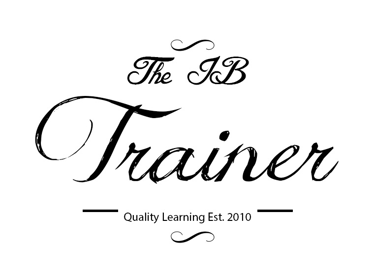Leadership Styles Why No Two Bosses Lead the Same Way
Discover the five key leadership styles in IB Business Management and learn how real managers adapt their approach to inspire, motivate, and get results.
IB BUSINESS MANAGEMENTIB BUSINESS MANAGEMENT MODULE 2 HUMAN RESOURCE MANAGEMENT
Lawrence Robert
10/17/20253 min read


Leadership Styles: Why No Two Bosses Lead the Same Way
Every workplace has that boss. The control freak. The parent figure. The one who insists on a “quick team vote.” The one who barely turns up but swears it’s all about “trust.”
They’re all leaders - just with different styles. The IB Business Management syllabus gives us five:
Autocratic
Paternalistic
Democratic
Laissez-faire
Situational
Let’s meet them in action.
Autocratic Leadership - “My Way or the Highway”
Scene: Gordon Ramsay’s kitchen, London, 7:45 a.m.
“Slice, not dice!” he shouts. No discussion, no negotiation - just do what you are told, precision and speed.
That’s autocratic leadership: tight control, clear authority, and zero consultation. Communication flows one way - down. Perfect where mistakes are costly (police, fire services, aviation).
Advantages
Rapid decisions and clear direction
Useful when workers lack experience or initiative
Strong oversight in high-risk jobs
Disadvantages
Demotivates staff, kills innovation
No future leaders trained
Organisation stalls if the boss is absent
IB Business Management Real-life Example: Amazon’s early years under Jeff Bezos were textbook autocracy: relentless targets, tight supervision, no room for hesitation. It built discipline - but also burnout.
Paternalistic Leadership - “Work Family First”
A small bakery in Bath.
Owner Maria checks in with every baker. “How’s your mum after the op?” she asks before adjusting the rota so one of them can leave early.
That’s paternalistic leadership - the “parental” approach. The leader makes decisions for the good of the team, believing they know best. Often seen in family businesses or firms with close-knit cultures.
Advantages
Softer than autocratic; improves motivation and loyalty
Builds trust when workers feel genuinely valued
Disadvantages
Decisions still top-down
Staff development limited
Risk of over-protective or misguided leadership
IB Business Management Real-life Example: UK retailer John Lewis has long used a paternalistic tone - “partners,” not employees - offering profit-sharing and welfare schemes. But too much protection can dull ambition.
Democratic Leadership - “Let’s Decide Together”
Spotify HQ, Stockholm.
Teams sit around beanbags debating playlist algorithms. The final call lies with the manager - but everyone’s voice matters.
That’s democratic leadership: inclusion, participation, and empowerment. Leaders consult, listen, and then choose. Works best with skilled, creative staff.
Advantages
Boosts morale and belonging
Produces informed, creative decisions
Encourages open communication
Disadvantages
Slower decision-making
Can cause conflict or indecision
Inefficient in crises
IB Business Management Real-life Example: The BBC often uses democratic practices in its editorial teams - constant meetings, open debate, multiple perspectives. Brilliant for fairness, terrible when a decision is needed now.
Laissez-Faire Leadership - “You’ve Got This”
Google’s design lab.
Teams brainstorm, build prototypes, scrap them, rebuild - all without the boss hovering. Leadership exists, but it’s hands-off.
Laissez-faire leaders delegate power and let employees chart their own path within broad goals. It’s the polar opposite of autocracy - and it thrives where staff are competent and motivated.
Advantages
Encourages innovation and autonomy
High motivation for skilled staff
Great retention among self-driven teams
Disadvantages
Poor control or alignment with goals
Management seems invisible
Confusion about responsibility
IB Business Management Real-life Example: Pixar famously applies this style within projects - animators and writers work independently before bringing ideas to a central review. It nurtures genius but demands self-discipline.
Situational Leadership - “Adapt or Fail”
A logistics company during a snowstorm.
Trucks stuck, orders delayed. The manager who’s usually democratic suddenly turns autocratic: “No debate - reroute everything via Manchester.” Crisis averted.
That’s situational leadership - flexing style depending on the context. There’s no single best way; leaders read the room and adjust.
Advantages
Matches style to circumstances
Works across industries
Balances support and control
Disadvantages
Hard for leaders with fixed habits
Can confuse staff if tone keeps changing
Inconsistency may reduce trust
IB Business Management Real-life Example: Jacinda Ardern showed this blend during crises - empathetic and inclusive most days, but decisive and directive when New Zealand faced emergencies.
The Context Matters
Leadership isn’t about being “nice” or “strict.” It’s about effectiveness.
The right style depends on:
Nature of the task (routine vs strategic)
Time and cost pressure
Skill level of staff
Personality of the leader
Organisational culture
A start-up in Berlin might thrive under laissez-faire creativity, while a hospital ward in Manchester needs clear hierarchy. The skill is knowing when to switch gears and how to adapt the strategy to the context.
IB Business Management Final Thought
The best leaders aren’t locked into one box. They’re like conductors - sometimes quiet, sometimes fierce, always tuned to the rhythm of their team.
Stay well,
IB Complete Support Courses, a new generation of affordable support materials directed at IB students seeking grades 6 or 7.
© Theibtrainer.com 2012-2025. All rights reserved.
